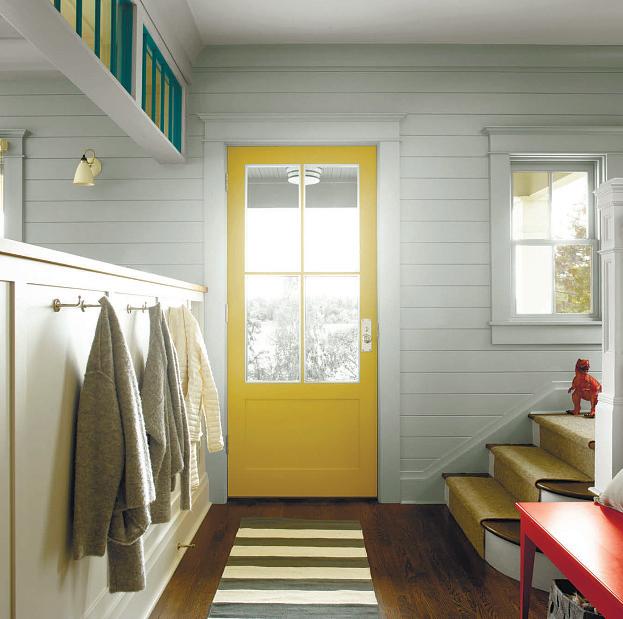



















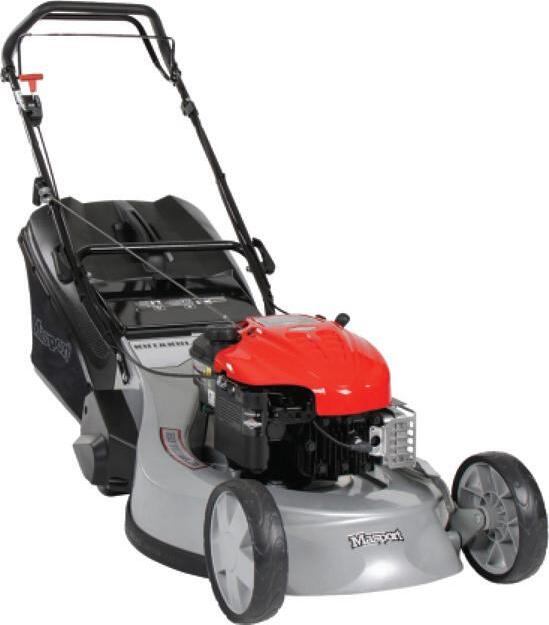


































Gardening is a rewarding hobby that pays a host of signifi dividends. Many people love gardening because it allows them to spend time outdoors, and that simple pleasure is indeed a notable benefit of working in a garden. But the National Initiative for Consumer Horticulture notes that gardening provides a host of additional benefits, including helping people get sufficient levels of exercise, reduce stress and improve mood. With so much to gain from gardening, it’s no wonder people look forward to getting their hands dirty in the garden each spring. As the weather warms up, consider these tips to help bring a garden back to life.
Winter can take its toll on a garden, even in regions where the weather between December and early spring is not especially harsh. Discard dead plants that have lingered into spring and prune any perennials that need it. Branches that fell during winter storms also should be removed at this point if they have not previously been discarded.

Soil testing kits can be purchased at local garden centers and home improvement retailers. Such tests are inexpensive and can reveal if the soil needs to be amended to help plants thrive in the months to come.
Homeowners with in-ground irrigation systems or above-ground systems that utilize a drip or soaker function can inspect the systems before plants begin to bloom. Damaged sprinkler heads or torn lines can deprive plants of water they will need to bloom and ultimately thrive once the weather warms up.
Gardening tools have likely been sitting around gathering dust since fall. Serious gardeners know that tools can be expensive, so it pays to protect that investment by
Mulching benefits a garden by helping soil retain moisture and preventing the growth of weeds. Various garden experts note that mulching in spring can prevent weed seeds from germinating over the course of spring and summer. That means plants won’t have to fight with weeds for water when the temperature warms up. It also means gardeners won’t have to spend time pulling weeds this summer.
maintaining the tools. Sharpened pruners help make plants less vulnerable to infestation and infection. Well-maintained tools like shovels and hoes also make more demanding gardening jobs a little bit easier, so don’t forget to tune
up your tools before the weather warms up.
It’s almost gardening season, which means gardeners can start on the necessary prep work to ensure their gardens grow in strong and beautiful this spring.













Solar energy panels have gained visibility in neighborhoods across the country. Where it once was a rarity to see solar panels on the roofs of homes, today a stroll or drive around a given community is bound to reveal a number of homeowners have made the transition to solar power. You may be wondering if the investment is worth it.
Solar panels harvest energy from the sun through the use of photovoltaic cells. These semiconductor materials absorb photons from the sun, and the photons release electrons from the atoms of the semiconductor material. According to Forbes, the flow of these electrons within the cell creates an electric current directed to circuits. Solar panels can be placed anywhere there is abundant sunlight, such as in open fields. In residential areas, they’re most often placed on roofs to get the most sun exposure.
Although having solar panels on the roof may affect the aesthetic of a home, many people find the benefits far outweigh such issues. Consider these perks to going solar.
• Save money: One of the draws of solar power is the ability to save money on your monthly utility bill. Electricity costs seemingly rise year after year. The Solar Energy Industries Association® says the cost of solar has decreased by more than 70 percent in the past decade compared to the cost of electricity, which has risen about five percent. Over the course of a solar panel life span, which is typically between 25 and 30 years, it’s possible to save $25,500 to $33,000 on electricity.
• More affordable: As noted, the cost of installing solar panels continues to drop. Investopedia says upfront cost of a residential solar power system is between $3,500 and $16,000, depending on the size of the system. Energy.gov says the United States has extended the federal residential solar tax credit, and you can save a 30 percent tax credit on the cost of solar systems through January 1, 2033. Options abound for financing to make solar more affordable.
• Increased home value: According to the National Renewable En-

ergy Laboratory, homeowners can increase the value of their homes by $20 for every $1 in savings on electrical bills from solar energy. Homes with solar panels sell 4 percent higher than those that don’t have them.
• Get paid back: Solar incentives in some areas may enable homeowners to turn profits in addition to generating electric bill savings. Solar renewable energy credits compensate you for the electricity that the solar panel system generates.
• Avoid disruptions in power: Strong storms or even accidents that affect power lines can knock out traditional electricity for hours. Battery storage combined with solar energy can be beneficial during a disruption in power, and eliminate the need to purchase a backup generator.
• Protect the planet: Burning of fossil fuels to generate power contributes to carbon emissions. Switching to solar can reduce carbon emissions and prevent air & water contamination.


Drivers go to great lengths to ensure what’s under the hood of their vehicles is well taken care of. But it’s equally beneficial to tend to the exterior of a vehicle, including its paint job.
According to Popular Mechanics, oxidation can adversely affect ironbased metals. That can put vehicles in jeopardy and take significant time off their life expectancy. The good news is that rust and other issues that can affect a vehicle’s paint job and appearance are typically avoidable. That should be music to the ears of new vehicle owners, who likely need no reminder of the sizable financial investment required to drive off the lot with a fresh set of wheels. Drivers who want their cars and trucks to maintain their looks over the long haul can consider these simple strategies to protect their paint jobs.
• Make car washes part of your vehicle maintenance routine. Seasoned drivers are undoubtedly familiar with the conventional wisdom surrounding oil change intervals, but those same motorists may not recognize the importance of routine car washes. Over time, contaminants such as pollen, dust and pollution can settle on a vehicle’s exterior, potentially jeopardizing the paint job. Routine car washes can prevent such damage and help a car look like it was just driven off the lot.
• Wax the exterior of the vehicle. The automotive experts at Carfax® report that waxing is a significant and simple way to protect vehicle paint. Carfax® notes that certain paste waxes contain mild abrasives that help remove fine scratches from painted surfaces. Wax also can protect paint jobs from fading related to exposure to ultraviolet rays. That’s especially noteworthy for drivers who do not routinely park their cars in a garage.
• Use a car cover. Car covers may or may not be practical for cars drivers use every day, but they are an effective way to protect a paint job from the elements. Drivers who have a spare car they rarely drive or even
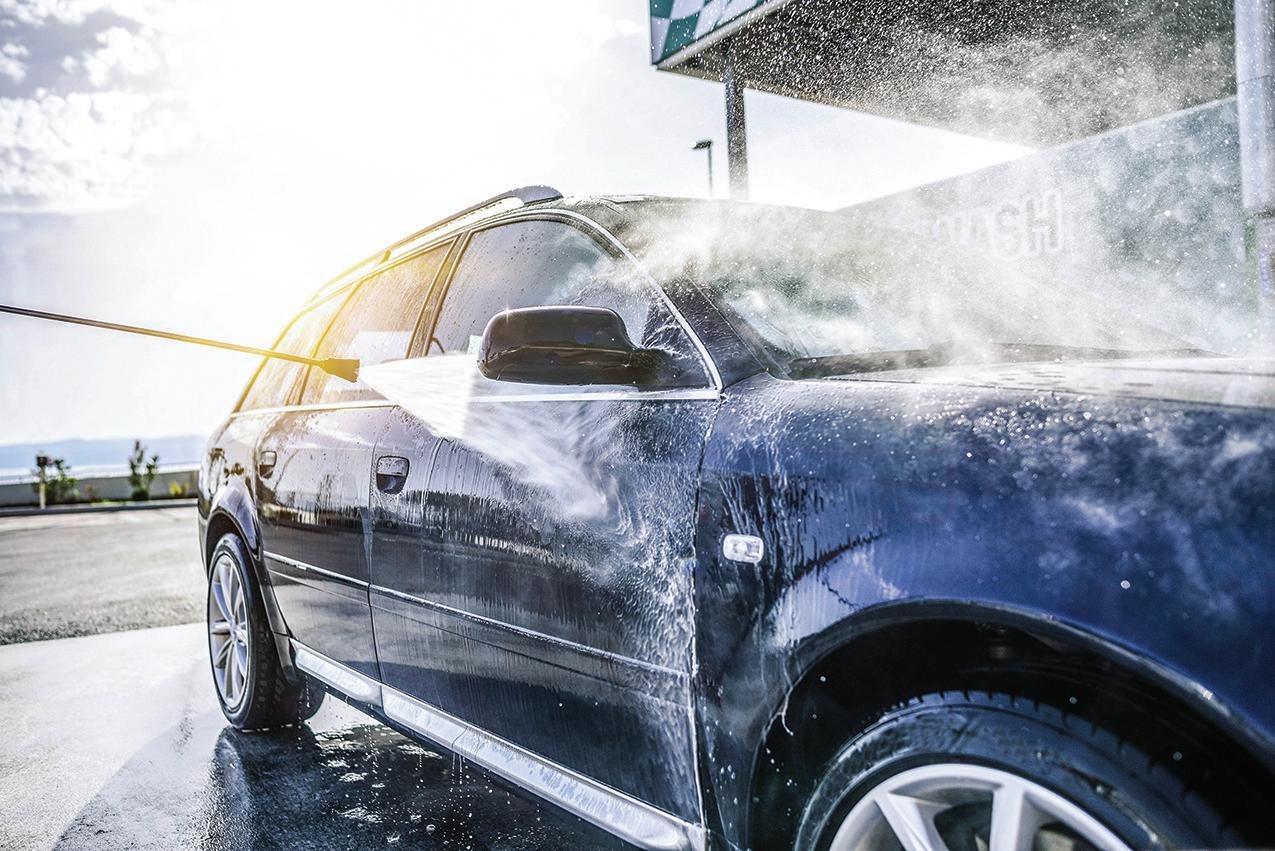
those who do not drive their primary vehicle a lot each day can purchase a universal-fit car cover or a premium cover designed specifically for their vehicles. Car covers protect paint jobs from ultraviolet rays and the elements and may reduce the need for more frequent trips to the car wash.
• Park in the shade, but choose spots wisely. Parking in the shade may protect vehicles from the ultraviolet rays of the sun, but it’s important that drivers pick the right shady spot to park their cars and trucks. A shade tree might seem like a great ally to vehicle owners, but if birds nest or rest in the tree, drivers could be exposing their cars to bird droppings. That’s no small threat, as bird droppings are high in uric acid, which quickly damage a vehicle’s exterior. Parking directly beneath a tree also might expose the paint job to sap or fallen leaves or berries, each of which can adversely vehicle exteriors. If you plan to park in the shade to protect the paint job, ideally choose a spot that is not directly beneath the tree.

Contractors perform important work for millions of homeowners every day. Home improvement projects are complicated undertakings, and the experience of skilled contractors can ensure jobs are completed on time and within homeowners’ budgets. Homeowners have undoubtedly heard horror stories from neighbors about projects that have gone awry. Projects can go sideways for a number of reasons, but a skilled contractor can help homeowners navigate such situations successfully. That underscores how important it can be to find the right professional for the job. The following are some tips homeowners can consider as they look to hire a contractor.
• Identify which professional you need. Some contractors are of the jack-of-all-trades variety, but many specialize in a particular line of work. It’s important that home-

tractor they should work with prior to starting a project. This requires homeowners to define the goal of the project (i.e., new wood floor instal-


nding the right type of contractor.
• Prioritize building safety. Safety should be the utmost priority for homeowners and contractors alike.
Prior to hiring a contractor, homeowners should identify any safety restrictions that might be enforced by local governments and take note of all the permits necessary to get a job done. Homeowners can then discuss those restrictions and permits as they interview contractors. Projects that do not adhere to code are illegal and can compromise homeowners’ ability to sell their homes in the future. So it’s vital to work with contractors who are familiar with local codes and aware of which permits are necessary to ensure a project can go forward.
• Insist on written estimates. Handshake agreements offer no protection to homeowners or contractors, so estimates indicating what will be done and how much the project will cost should be provided. Homeowners should insist on receiving written estimates and interpret an unwillingness to provide one as a significant red flag.
Laws vary by region, but in general homeowners have a right to a written contract and contractors are obligated to provide a copy of that contract signed by both parties. That contract must be provided prior to the start of the project. The contract should provide a detailed account of the work that will be done, as well as a timeline indicating important dates that components of the project will begin and be completed. The contract also should detail materials and who is providing them. Details regarding payments, guarantees and warranties also should be cited.
• Do not pay in cash. Some contractors may suggest that the project will cost less if they’re paid in cash. However, home improvements should never be cash transactions. Cash does not indicate proof of payment, which can be problematic if a dispute arises.
Contractors help homeowners turn dream projects into reality. Homeowners can employ various strategies to ensure they find the right professional for their home improvement project.
Oil changes, tire rotations and even car washes may garner the bulk of drivers’ attention in regard to vehicle maintenance. But various smaller undertakings, including keeping vehicle interiors clean, are worthy of drivers’ attention as well.
Dust and dirt can accumulate in a vehicle over time, making for a less comfortable ride. Keeping vehicle interiors clean can make car and truck cabins more welcoming for drivers and their passengers, and such maintenance is simple and inexpensive.
• Focus on the floors. The floors in a car face all that weather has to offer. In winter, boots may track snow and deicing solutions like salt into a vehicle’s cabin. In summer, sand from the beach or dirt from hiking trails may find its way in. Some drivers use the same floor mats yearround, but there’s an advantage to switching based on the seasons. According to the automotive experts at Napa, fabric floor mats in summer will hold on to dirt and keep it from spreading. Beachgoers will appreciate that after tracking sand into their cars. In the winter, swap fabric floor mats with rubber or plastic alternatives, as these mats will hold melting snow, rain or salt, preventing them from staining the floors.
• Be mindful of seating materials. When cleaning seats, drivers should be mindful of the materials those seats are made of. Cloth seats should be cleaned differently than leather and vinyl, and all seats should be vacuumed prior to cleaning. Consumer Re-
ports notes that leather and vinyl seats are treated with a protective coating that requires gentle cleaning. Begin with a small cloth with a dab of dish or saddle soap, and then apply a leather conditioner to prevent the leather from drying out. When cleaning cloth seats, an upholstery cleaner can be applied to stains, just be sure to follow instructions carefully. Cleaning products are not all the same, and application techniques may vary. A scrub brush can be used to work cleaning solutions into the seats and any lingering moisture can then be wiped away with a microfiber cloth.
• Clean the inside of your car windshield. glass cleaner to clean the interior windshields and windows. These surfaces can accumulate a significant amount of dirt due to interior vapors and air pollution. Consumer Reports recommends using a glass cleaner that contains alcohol. Interior glass cleaners are designed to prevent streaking and film buildup, which can compromise drivers’ vision.
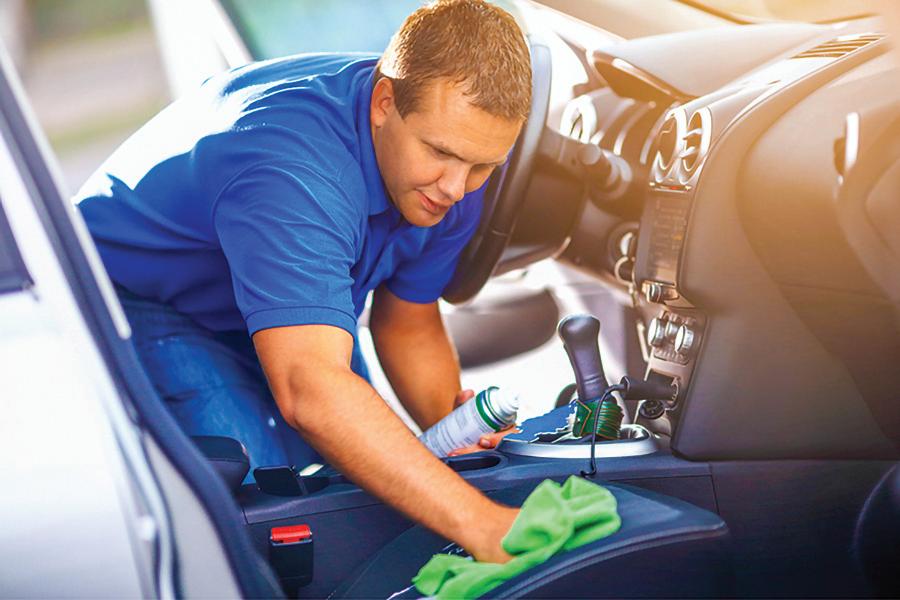
• Take on touchscreens. Modern vehicles have touchscreens that can quickly accumulate dust and fingerprints. Toyota recommends soaking a clean cloth in lukewarm water and lightly wiping the surface of touch screens. Avoid substances like solvents, alkaline or acidic solutions, which can contribute to staining or discoloration on the screen.
Clean car interiors can make driving that much more enjoyable and even more healthy.

An “out with the old, in with the new” mentality can extend to people’s visions for their homes. A home in need of repair or renovation can serve as a catalyst to take inventory of personal style and help make interior spaces reflect one’s unique vibe.
A living room can grow stale over time and often serves as a catchcall for clothing, blankets, gadgets, and other items. Upon recognizing a living room has seen better days, individuals may decide it’s time to give the space a new vibe. That transformation can start with these strategies.
Clutter frequently is the culprit behind a living room that may not give off the vibe individuals desire. As families grow and people add belongings, space may be at a premium. Less is more has never been a more important concept. Remove extraneous items before purchasing new furniture or transitioning to a new design. You may even want to remove everything and start from scratch before reintroducing desirable elements to the space.







Some people are adept at decorating and designing spaces. But just as you wouldn’t perform your own medical procedures, you should leave jobs like interior design and renovations to the professionals. Hiring a professional interior designer and contractors can really bring a living room together in ways homeowners may have never imagined. These pros can build off of your ideas and truly create a space that may be worthy of a magazine spread.
One of the easiest ways to transform a room’s vibe is to utilize lighting. Change draperies to allow more natural light to shine in. Consider additional windows or skylights if yours is a particularly dark home. If you desire to create a more vivid or cozy ambiance, use a combination of accent, task and supplemental lighting in the space so there are no dim corners.





You may want to consider adding natural materials in the design to promote well-being. Eco-friendly furnishings, raw fibers and organic textures will create an environment from sustainable choices. Plenty of plants also can create a welcoming environment that helps you surround yourself with positive energy and the items you love.
Industrial-chic design celebrates the bones of a building. It’s what makes city lofts so appealing, with their exposed beams and brick. Even those who live in suburbia or out in the country can give a living room this look with subtle nods to the style. Unadorned windows, clean lines on furniture, oversized, gallery-style art, and metal accents can add touches of this popular look to your home.
Revamping a living room doesn’t have to be difficult. With an idea in place and some professional touches, an entirely new vibe can be achieved.
Inflation has been a hot topic for several years, as the cost of everything from groceries to gas to housing has increased considerably since 2019. Cars are no exception to that phenomenon, and anyone who has purchased a new car over the last half decade likely experienced some sticker shock when they started their search for a new vehicle. Data from Kelley Blue Book indicates the average cost of a new car was $37,590 in 2019. By 2023, the average cost had risen to $47,899. That marks an increase of more than 27 percent in a four-year period.
Cars are indeed a significant investment, which underscores the importance of vehicle maintenance. Maintenance is more than just tending to what’s under the hood. Tires also require drivers’ attention, as aging, damaged tires pose a safety risk that also compromise vehicle performance. Tires are easily overlooked, but the following are four signs tires need to be replaced.
1. Worn tread: The automotive experts at AutoZone® note that tread depth is the most prevalent indicator that a tire needs to be replaced. AutoZone® notes that tread depth should always be at least 2⁄32 of an inch throughout the tire. Depth should be measured across the tread and around the circumference. If the tread is at or below 2⁄32 of an inch, the tire should be replaced.
2. Bulges, gouges or cracks: Geico® notes that a deflated tire bulges at the sides, and that can compromise the safety of every-
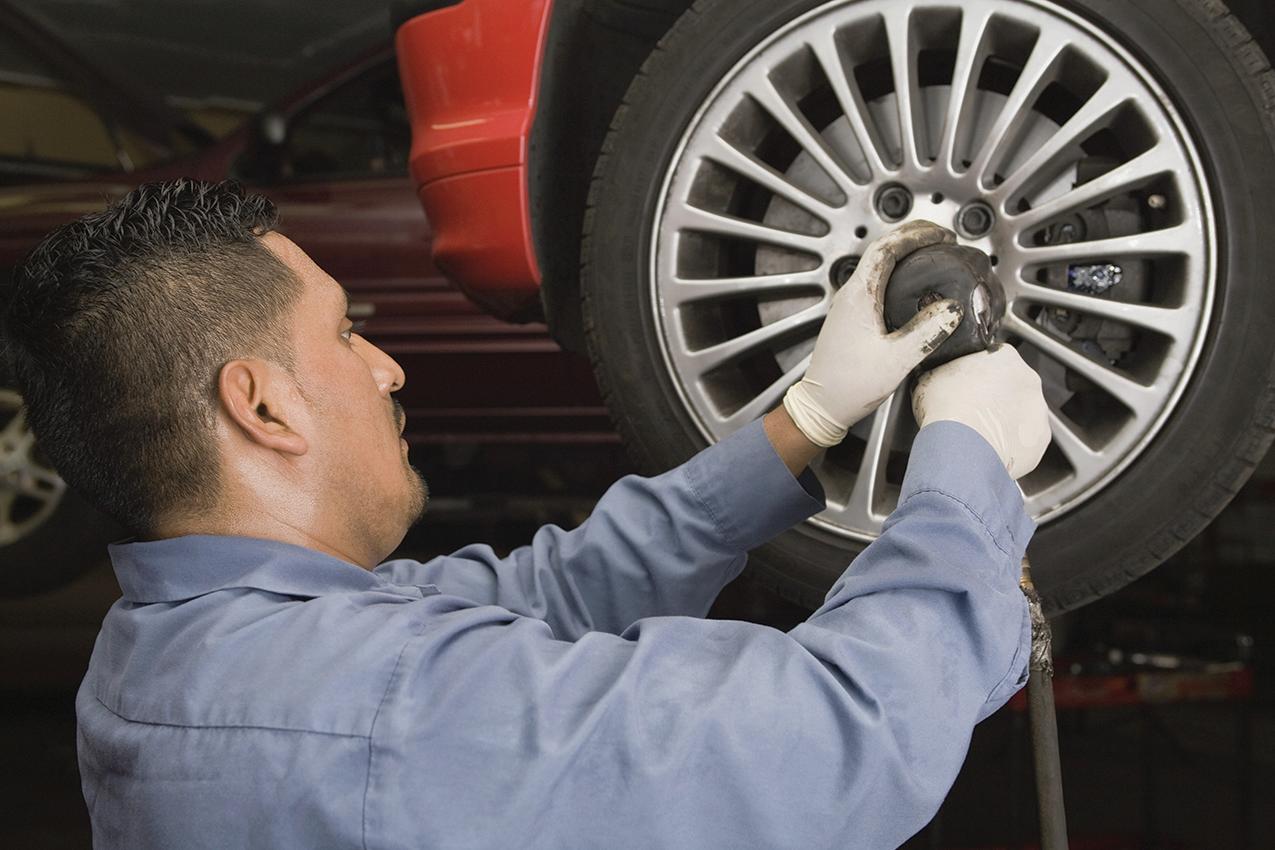
one in the vehicle. AutoZone® says bulges occur when air gets between the inner liner and outer rubber layers, which can happen after hitting a curb or driving over a sizable pothole. A gouge or cut that is deeper than the outer layer of the tire also necessitates replacement.
3. Poor grip: Drivers may be able to feel certain tire problems, including poor grip, while driving. In such instances, tires may feel as though they are slipping. The tire experts at Firestone note that low tread can reduce tire traction and cause wheels to slip, which may be more noticeable when accelerating from a stop or driving on wet roads. Drivers who feel their tires are slipping can test the tread and replace tires that are low.
4. Vibration: Vibration is another issue drivers may feel rather than see. And identifying the cause requires noting where the vibrations are felt. Geico® notes that a feeling of vibration or thumping that feels like it’s coming from under the seats may indicate the tires are not balanced. A suspension issue could be to blame if the steering wheel feels
like it’s vibrating. Either feeling should be brought to the attention of a mechanic immediately.
Tire issues affect vehicle performance and compromise the safety of drivers, their passengers and fellow motorists. When vehicles are not performing at peak capacity, drivers should not overlook various tire issues as a potential cause of such troubles.



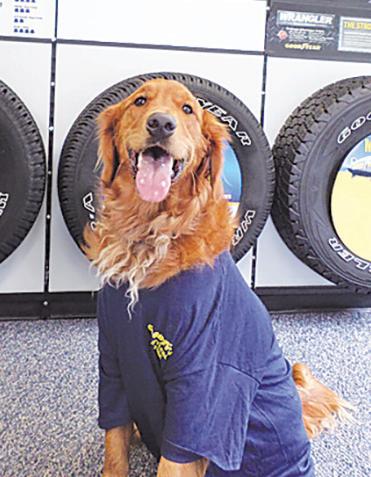
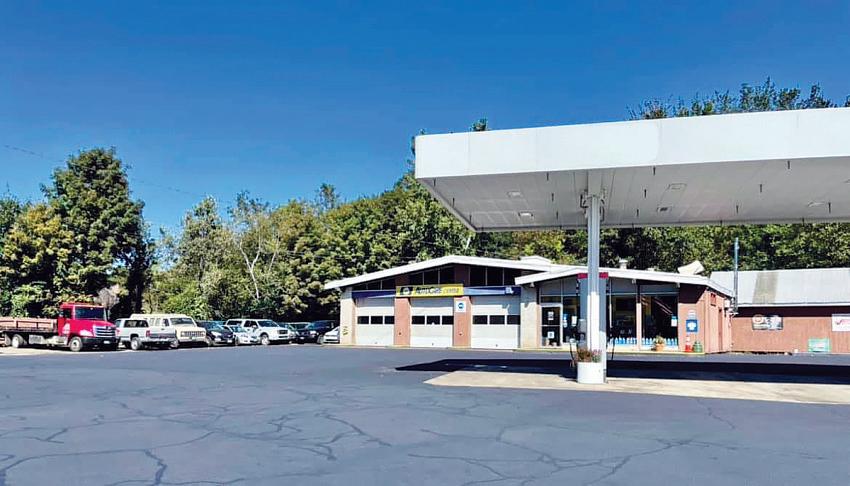

Modern automobiles are technological marvels. As advancements in automotive technology have made cars more reliable than ever, drivers may feel as though vehicle ownership also is more hands-off than ever before. Though it’s true built-in diagnostic technology is designed to alert drivers when issues arise, it can still benefit motorists to recognize when certain issues may arise.
Cars and the people who drive them are different, so mileage intervals are not always the best measuring stick for maintenance issues. However, the following rundown can serve as a guidebook for drivers who want to know what to expect at various mileage intervals.
30,000 MILES
 VERMONTSTATEINSPECTIONSTATION
 NONETHANOLGAS-AVAILABLE24/7

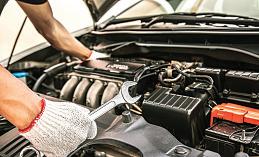

802-387-4771
40MainSt.Putney,VT05346
ShopHours:Mon-Fri:8:00-5:00andSat:8:00-12:00|GasPumps:24/7|Towing:24/7
The experts at Auto Trader note that disposable engine air filters usually last between 15,000 and 30,000 miles. If it’s been around 30,000 miles since the engine air filter has been replaced, now is a good time to replace this important part, which prevents components like dirt and debris from getting into the engine. This also might be a good time to replace the fuel filter, which prevents debris from clogging fuel injectors.
50,000 TO 60,000 MILES
It’s around this time that drivers may need to replace their vehicle batteries. Little-used vehicles may need a new battery much earlier, as lengthy periods of little or no use adversely affect the life expectancy of vehicle batteries. Brakes also may need to be replaced around
this time, as the experts at AutoZone® note that most drivers get between two and five years out of a set of brake pads. If that sounds like a significant disparity, it is, and that’s because driver behavior is a significant variable affecting the life of the pads. Drivers who brake hard will likely need to replace their brake pads with greater frequency than drivers who brake slowly.
50,000 TO 90,000 MILES
As noted, there is no uniform guideline governing when vehicle components will need to be replaced. Hoses are a good example of that, as recommendations regarding when to replace hoses range from 50,000 to 90,000 miles. That’s a significant gap, but drivers can be on the safe side and start discussing the status of their hoses with their mechanics around the 50,000 mile marker. It’s unlikely the hoses will make it all the way to 90,000 miles before they need to be replaced, but drivers can keep that mileage marker in mind and aim to replace the hoses before that point even if no issue has arisen. Timing belts also tend to fail between 80,000 and 100,000 miles, so this is another part to consider replacing as a vehicle reaches this point.
These mileage markers are not set in stone, and should only serve as a guideline for drivers who want to stay ahead of vehicle repairs. Drivers also are urged to discuss any additional changes that might be necessary with their mechanics during routine maintenance appointments.
Who doesn’t have a space that serves as a catch-all for items that seemingly have no other home? For many, this storage wasteland where items go to be forgotten tends to be the garage. Before long, clutter can overwhelm the space and create an eyesore. Garage clutter also makes the space less functional by making it harder to park a vehicle or store equipment.
Organizing a garage takes work, but the end result can improve the appearance, free up space, make work more efficient and make it easier to find and use tools more readily. Here are some ways to get started on organizing your garage.
One of the first steps when organizing a garage is to thoroughly analyze what is needed and what can be removed from the garage. If items belong elsewhere, such as in a shed or the basement, move these items first. Discard damaged or broken items. Next, move on to tools or gear that hasn’t been used in some time. Will you use it again? If the item has been collecting dust for years, you likely already know the answer to that question.
Pile all of the items in the driveway so you have a clean slate with which to start. Measure the room to figure out the exact dimensions so you’ll know how much wall space is available for storage.
The ultimate goal of a garage storage renovation is to make floor space available. Lifting items off the floor makes access easier and protects items should there be a flood or leaks.
A combination of wall shelves, overhead shelves, cabinets and wall hooks can help homeowners create more floor area. Organization becomes easier when everything has a designated space where it can be easily returned to.
When investing in shelving and racks, remember that many of the items stored in garages tend to be heavy. It’s important to ensure that
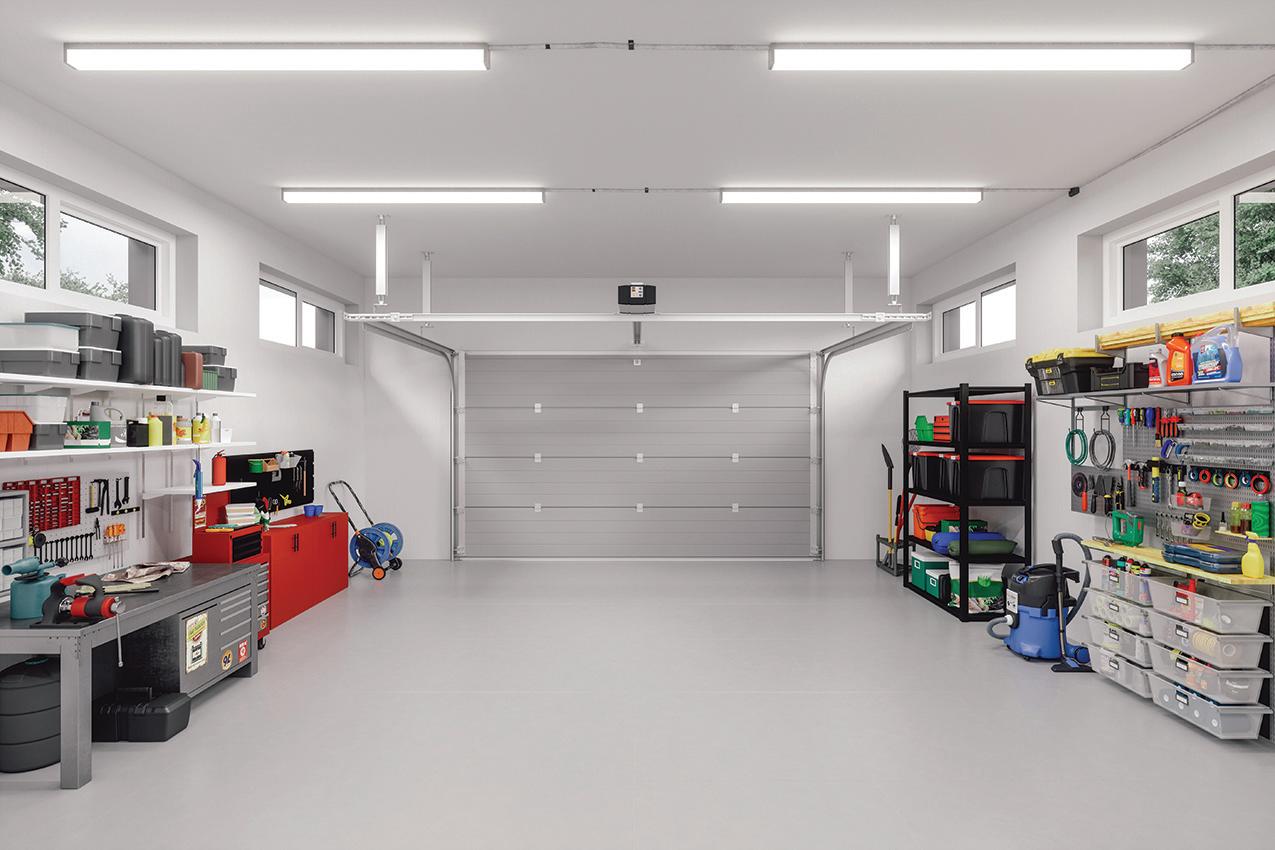
shelves and hooks are heavy-duty and able to withstand the weight of pressure put on them. Verify the maximum weight so that racks will not buckle or tip over and cause issues.
Overhead storage can be reserved for items that aren’t used frequently, such as seasonal decorations or luggage.
Some items should be stored out of sight and beyond the reach of children and pets. Cabinets and containers can be used and locked to secure materials, such as fertilizers, paints, solvents, and other chemicals.
Magnets, pegboards, organization bins and systems and similar products can be used to corral small or errant items like hand tools, fasteners and more.
Garage organization will take some planning and time, but the end result can be well worth the effort.







